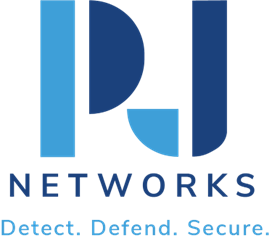Advanced Troubleshooting: How PJ Networks Resolves Firewall Issues
Welcome to the world of firewalls—those sentinels standing guard over our precious networks. Firewall troubleshooting isn’t just about flipping switches and hoping for the best. It’s an art—a fusion of experience, intuition, and relentless tinkering. And it’s something I’ve loved since I started as a network admin back in 1993. Admittedly, I was a tech-loving rookie surrounded by stacks of beige computers, dealing with mux for voice and data over PSTN and navigating the wild west of early internet threats like the Slammer worm. But here I am now—running my own security company, PJ Networks, still hands-on with firewalls and other fortified network defenses.
Troubleshooting Challenges
Let’s start with the heart of the matter: why is firewall troubleshooting so darn tricky? Firewalls are complex beasts, and there’s rarely a one-size-fits-all solution to any problem. And here’s the kicker—every network behaves in its own uniquely peculiar way.
- There’s the meta-troubleshooting—identifying whether the issue is *actually* with the firewall.
- Log analysis can sometimes feel like translating ancient scripts. (Because you’re trying to figure out what the heck is actually going on!)
- Network topology changes (often done without consulting the security team—thanks, guys!).
- Oh, it’s AI powered solutions—skeptical. I’d rather trust my network map and logical deductions any day.
What’s more, with the massive move towards zero-trust architectures—like the three bank upgrades I recently headed—there’s added pressure to ensure not only robustness but absolute safety. There is just no room for error.
Our Expertise
Here at PJ Networks, troubleshooting firewalls isn’t just about leveraging every tool under the sun (though we do that, too). It’s about knowing *how* and *when* to deploy those tools for maximum effect. Here’s what we bring to the table:
- Deep-rooted passion for networking: Remember those days of tinkering with dial-ups? We grew up with the tech.
- Advanced tools and technologies: We employ a range of robust tools for deep packet inspection, traffic monitoring, and log analysis—often using packet analyzers like Wireshark. And let’s not forget the in-depth log analytics prowess we deploy with Splunk.
- Years of collective battle scars: Having been in the trenches, tackling things like Slammer worm firsthand provides us invaluable first-hand insights.
- Hands-on experience: Most recently, DefCon left us buzzing about hardware hacking techniques that we can adapt to learn and anticipate more sophisticated attack vectors.
The magic lies in your ability to approach a problem from multiple perspectives and adapt according to the need of the hour—firewalls aren’t sum-and-subtract factual spreadsheets. They’re more like chess games with a myriad of potential outcomes.
Success Story
Picture this: a major financial institution (let’s call them Bank X) with sprawling network branches across multiple cities. Bank X was grappling with repeated, mysterious firewall downtime. Their security apparatus was robust, but something was out of tune. They called us in—and with quick thinking and proficient tool deployment, we began our meticulous search.
- First step—ease into traffic pattern analysis, understanding what normal looked like for them.
- Then, leveraging automated script checks for misconfigurations (and boy, did we find a few!)
- Identified shadow IT components (yes, those pesky unauthorized gadgets) causing unforeseen hiccups.
- Implemented a crystal-clear zero-trust model upgrade—moving from theoretical to practical.
Fast forward a month: Bank X reports seamless operations, better user satisfaction, and most importantly—rock-solid network uptime. For us, it’s those success stories that make every sleepless night and strong coffee worthwhile.
Conclusion
So, are firewalls problematic? Certainly. Are they worth the effort? Every bit. It’s this intricate dance between man and machine—historic and cutting-edge technology—that keeps us working late into the night, troubleshooting… learning, innovating.
Here’s the thing—security is as much about the people as it is about the hardware. The right domain knowledge adds an invaluable layer of protection. Because at the end of the day, your firewalls, my team, and I—we’re all on the same team. Working to keep the world a safer—which is why we keep pushing boundaries, day in, day out.
Quick Take
- Firewalls are complex: Each network is unique, beware of a quick fix mentality.
- Use the right tools: Wireshark, Splunk—for profound insights, not just surface scratchers.
- Embrace zero-trust: It has its challenges, but worth every penny for added security.
- Constantly adapt: The threat landscape changes; stay ahead of the curve!
